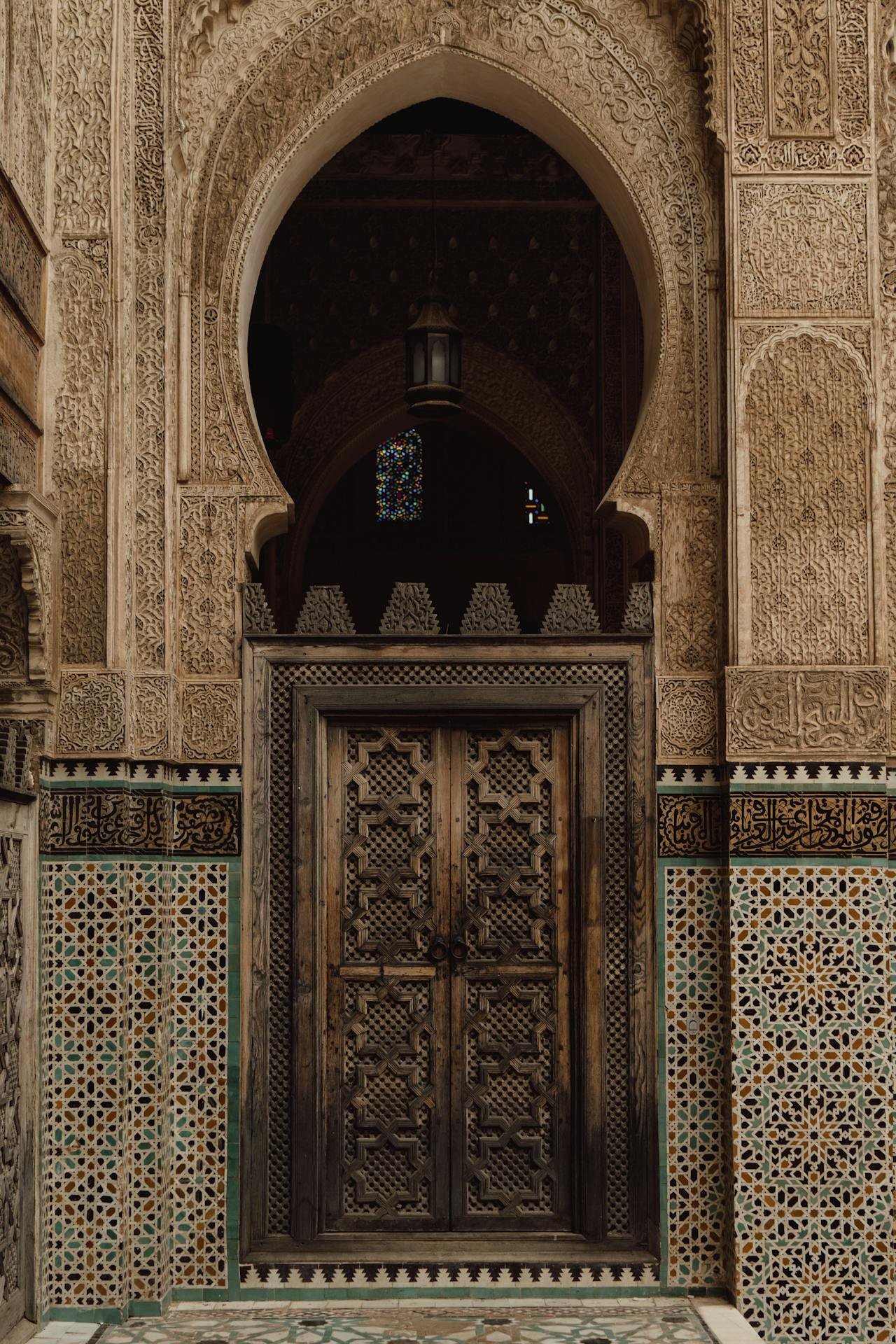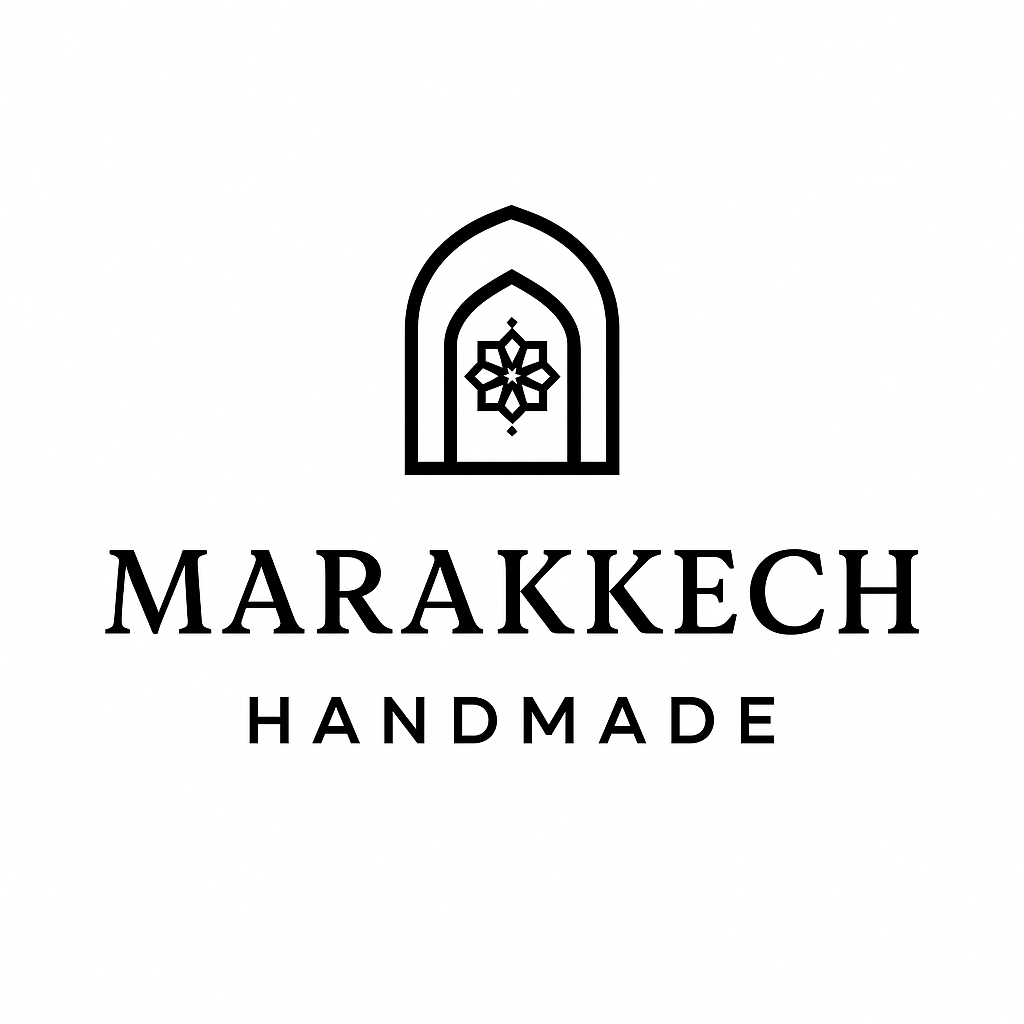
Pottery & Ceramics
“Earth and glaze in timeless harmony.”
Glazed ceramics painted with rich blue, green, and white tones. Timeless creations that bring elegance to any space.
Zellij: The Timeless Art of Moroccan Tilework
Zellij, also known as zellige or zellige, is a traditional Moroccan art form that has been integral to the country’s architectural and cultural identity for centuries. Originating in the 10th century during the Almoravid dynasty, zellij tilework was initially influenced by Roman mosaics and later refined by Muslim artisans in North Africa and Andalusia.
The term “zellij” comes from the Arabic word “zalij,” meaning “tile.” Crafted from clay found in Fez, Morocco, zellij tiles are meticulously handmade, glazed, and arranged into intricate geometric patterns. This craft reached its zenith during the Marinid dynasty (13th–15th centuries) in Fez, where artisans developed complex designs that adorned palaces, mosques, and madrasas
Marrakech, a city renowned for its rich history and architecture, showcases some of the finest examples of zellij artistry. Landmarks such as the Bahia Palace and the Ben Youssef Madrasa feature elaborate zellij tilework that reflects the city’s artistic heritage.
The process of creating zellij involves several meticulous steps:
Designing Patterns: Artisans begin by designing intricate geometric patterns, often inspired by Islamic art’s emphasis on symmetry and repetition.
Cutting Tiles: Clay tiles are cut into small pieces, each shaped to fit the design’s specifications.
Glazing: The tiles are glazed in vibrant colors, with traditional hues like cobalt blue, emerald green, and deep red.
Assembly: The glazed pieces are carefully arranged on a surface, forming the intended pattern.
Grouting: Once the design is complete, the spaces between tiles are filled with grout, securing the pieces in place.
This process requires immense precision and skill, with artisans often spending years perfecting their craft.
Zellij is more than just an art form; it embodies the Moroccan ethos of craftsmanship and aesthetic appreciation. The patterns often hold symbolic meanings, reflecting themes of unity, eternity, and the divine. By preserving and promoting zellij, Morocco maintains a tangible connection to its rich artistic and cultural heritage.
Today, zellij continues to be a hallmark of Moroccan architecture, with artisans in cities like Fez, Marrakech, and Salé upholding this ancient tradition. Visitors to these cities can experience first hand the intricate beauty and cultural significance of zellij tilework, witnessing a living testament to Morocco’s artistic legacy.
Zellij: Materials and Techniques
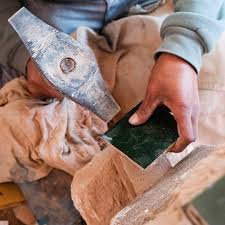
Cutting Tiles
Clay tiles are carefully cut into precise geometric shapes to fit the intricate design of Zellij patterns.
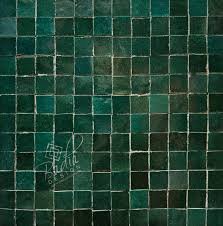
Glazing Tiles
Each tile is coated with vibrant, colored glazes using traditional pigments, producing the signature rich tones.
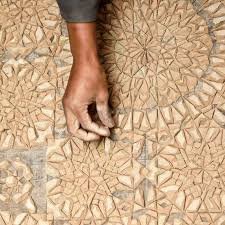
Assembling Patterns
Skilled artisans carefully place each tile piece to create harmonious geometric patterns, completing the mosaic design.
Marrakech Ceramics: A Rich Tapestry of Craftsmanship
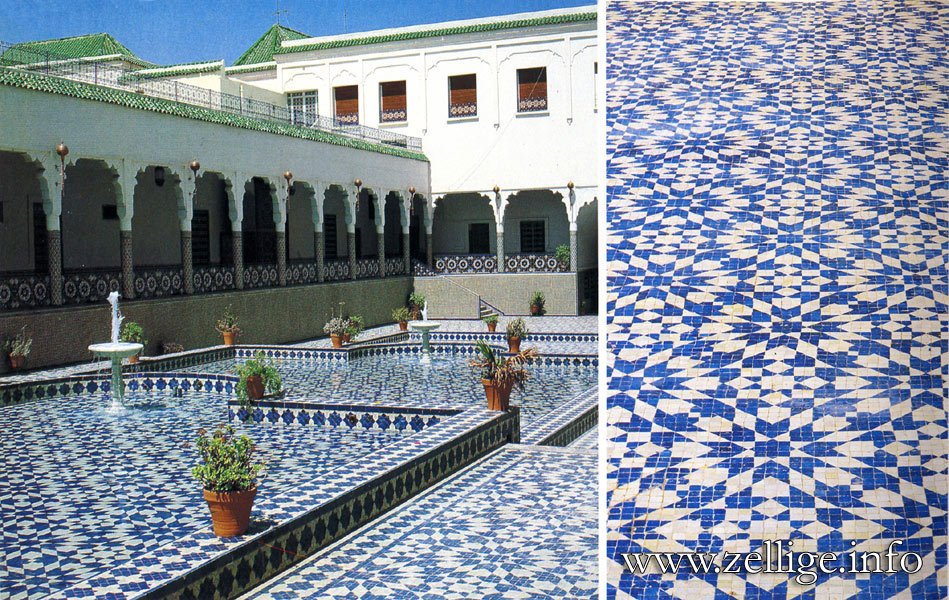
Zellij Tiles
The iconic Moroccan mosaic tiles, cut, glazed, and assembled by hand into intricate geometric patterns. Zellij adorns palaces, mosques, and homes across Marrakech.
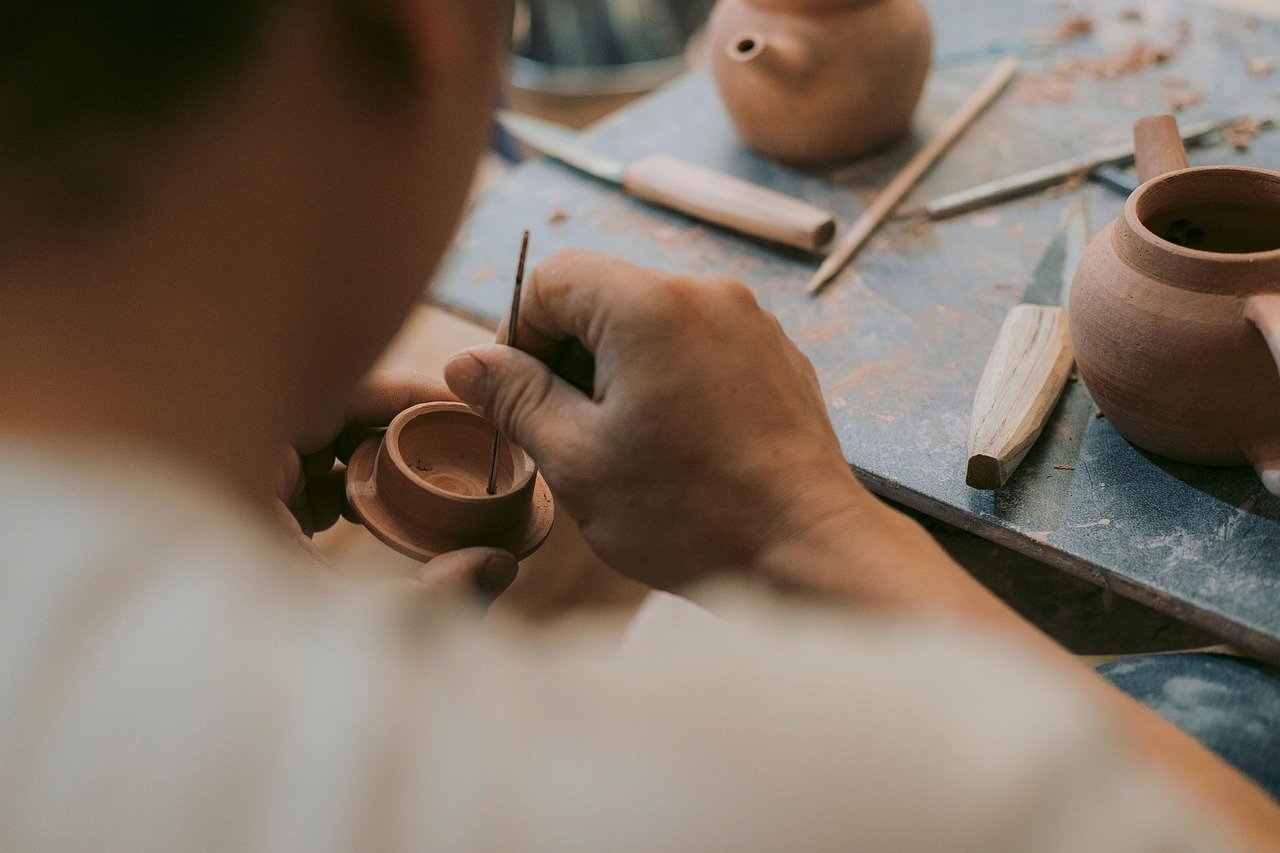
Hand-Painted Pottery
Colorful bowls, plates, and vases adorned with intricate designs using traditional pigments and glazes, reflecting centuries of local artistry.
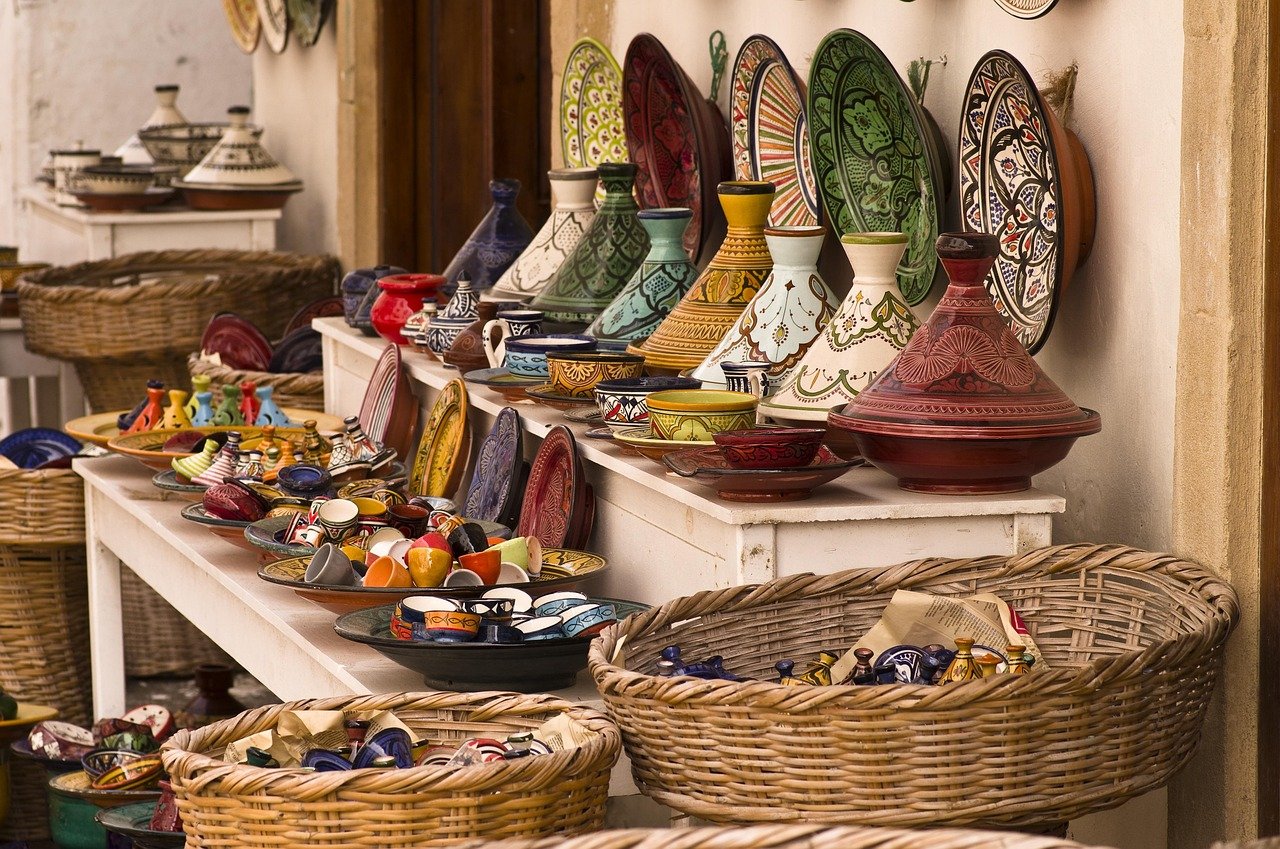
Glazed Ceramics
Elegant functional pieces, including tagines and water jugs, coated with smooth glazes in rich colors, combining practicality with artistry.
Quote
“Every ceramic piece tells a story — of Marrakech workshops, skilled artisans, and centuries of creativity shaped into clay and color.”
The most famous items
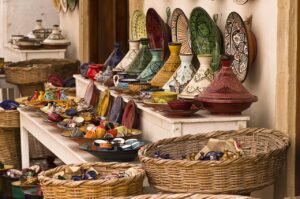
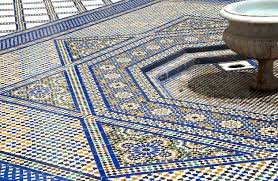
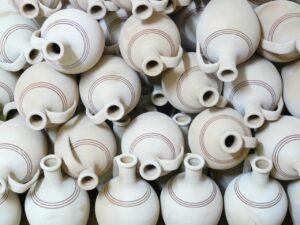

How to Identify Authentic Moroccan Ceramics
